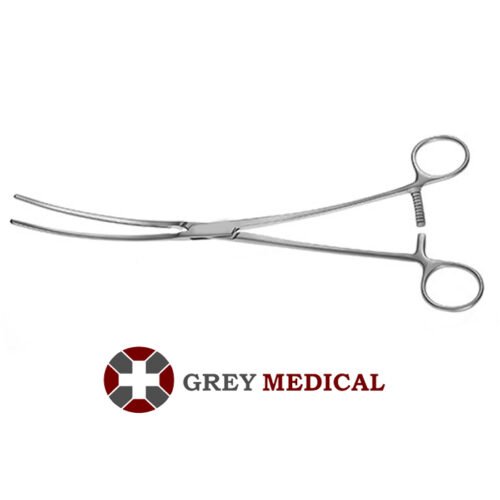Introduction
Surgical clamps are crucial instruments in the operating room, designed to control bleeding, secure tissues, and facilitate various surgical procedures. These versatile tools help surgeons maintain a clear field of vision, reduce blood loss, and ensure patient safety during operations. Surgical clamps play a crucial role in achieving these objectives by managing blood flow, securing tissues, and facilitating various surgical techniques.
1. What Are Surgical Clamps?
Surgical clamps are handheld instruments with two arms joined at a pivot point, allowing them to open and close. They come in various shapes and sizes, each tailored for specific tasks within different types of surgery. Their primary functions include clamping blood vessels to control bleeding, grasping tissues, and securing surgical drapes or other instruments.
2. Types of Surgical Clamps
Surgical clamps can be classified based on their design and specific uses. Here are some of the most common types:
1 Hemostats
Hemostats are specialized clamps designed to control bleeding during surgical procedures. They are often used to clamp blood vessels temporarily, allowing surgeons to manage blood flow effectively. The two most common types of hemostats are:
- Kelly Hemostat: This clamp is versatile and typically used for larger blood vessels. It features a straight or curved design and has transverse serrations that provide a secure grip.
- Mosquito Hemostat: Smaller and finer than the Kelly hemostat, the mosquito hemostat is ideal for clamping smaller blood vessels. It is often used in delicate surgeries where precision is crucial.
2 Tissue Forceps
While not traditionally classified as clamps, tissue forceps often serve similar functions in grasping and holding tissues. They come in various designs, such as:
- Adson Forceps: These are small, delicate forceps with serrated tips used for grasping fine tissues, making them suitable for suturing.
- Allis Forceps: These clamps have teeth and are designed to hold heavy tissues securely. They are commonly used in procedures requiring more significant tissue manipulation.
3 Bulldog Clamps
Bulldog clamps are used primarily in cardiovascular surgeries to occlude blood vessels temporarily. Their design allows for precise control over blood flow, minimizing the risk of damage to surrounding tissues. These clamps are particularly useful during vascular procedures, enabling surgeons to work effectively without excessive bleeding.
3. The Importance of Surgical Clamps
Surgical clamps play a vital role in surgical procedures for several reasons:
3.1 Controlling Bleeding
One of the primary functions of surgical clamps is to control bleeding. By clamping blood vessels, surgeons can minimize blood loss during operations, allowing for a clearer surgical field and reducing the risk of complications. This capability is especially critical in major surgeries where significant blood loss could jeopardize patient safety.
3.2 Enhancing Visibility
By securing tissues and controlling bleeding, surgical clamps enhance visibility in the surgical area. This improved visibility allows surgeons to perform intricate procedures with greater precision, reducing the likelihood of errors.
3.3 Facilitating Tissue Manipulation
Surgical clamps provide surgeons with the ability to manipulate tissues effectively. By holding tissues in place, clamps enable surgeons to access specific areas more easily, making it possible to perform complex maneuvers during surgery.
4. Conclusion
Surgical clamps are essential instruments that contribute significantly to the success of surgical procedures. Their ability to control bleeding, enhance visibility, and facilitate tissue manipulation makes them invaluable tools in the operating room. Understanding the types and functions of surgical clamps can help patients appreciate the complexity of surgical procedures and the expertise required to perform them safely.





Comments